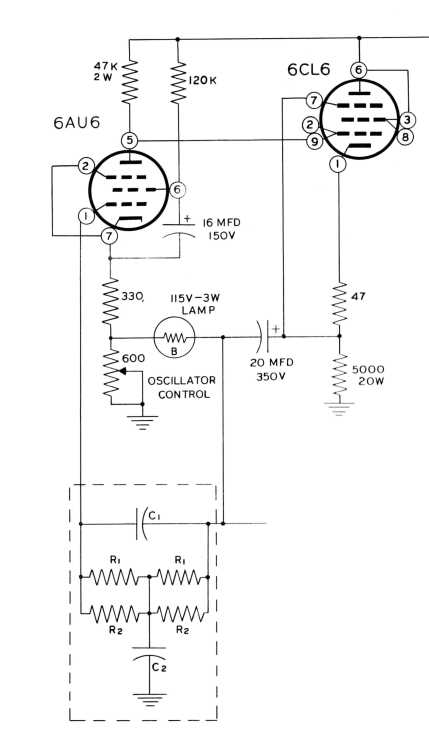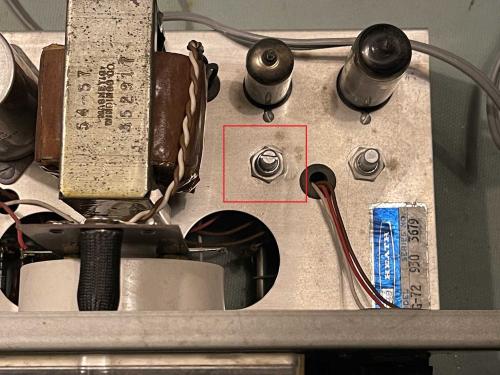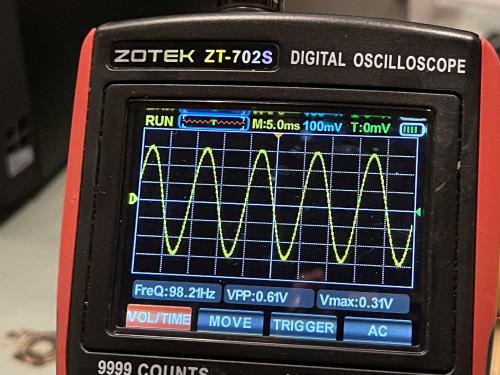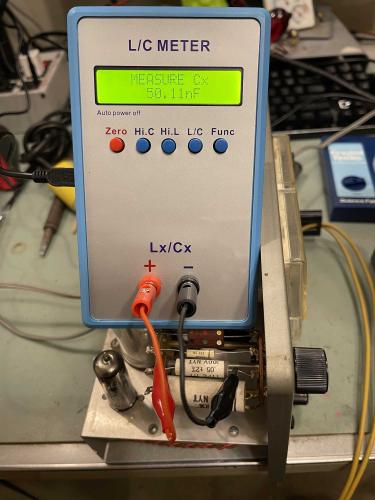- 2024
- Oct
- 25
A Heathkit IG-72 Signal Generator Part 2 - Suspicions.
I’ve been studying the schematic for this device - it’s not a complex circuit, so there isn’t much that could be wrong with it:

There are two tubes and a lamp used as a PTC that are immediate suspects, as well as the oscillator control. The problem happens on all ranges, so it’s unlikely that any of the filtering circuit is at fault since it’s switched in and out.
The 6CL6 is a cathode follower that provides the input to the 6AU6 so it can oscillate - remember that an oscillator is an amplifier that provides it’s own input. The circuit in the dotted line box is the filter that determines what frequency is being provided. The lamp is used as a positive temperature coefficient resistor that helps balance the signal.
Since the 6CL6 had been replaced in this unit, I started with it. Changing it for a NOS unit made no difference.
The next logical choice was the oscillator control. This regulates the level, not the frequency. The control is outlined in red - the other one is related to meter scaling.
I had the output hooked up to the signal tracer I recently rebuilt, and a noticeable buzz was present. That was the flat spot on the bottom of the signal. With that in mind, I adjusted the oscillator control until the buzz went away, confirming the signal clarity with the scope.
So…the device is working. But that doesn’t mean we’re done. Things like filters and tubes still need to be checked and potentially replaced, and there are some interconnect capacitors that probably should be replaced regardless. I’d also like to tidy up some of those old 5% resistors in the oscillator filter, even though the manual says they probably don’t make much difference. Still…why not. We know carbon comp resistors drift, and modern high-precision parts are cheap. Still, I did a spot check on the capacitors in the oscillator filter:
It’s supposed to be 50nF +/- 1nF. That’s pretty good for a 55 year old part that’s being tested with clipleads. That being said, what’s the leakage and ESR of the part? It will need to be taken out for that to be checked.
Stay tuned!
Next part of this series: https://wereboar.com … t-3-do-i-need-parts/
Previous part of this series: https://wereboar.com … part-1-observations/


